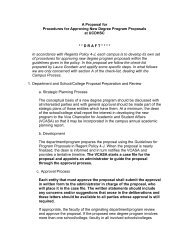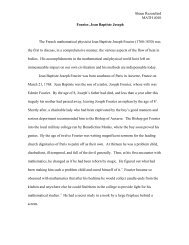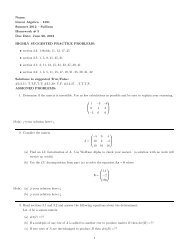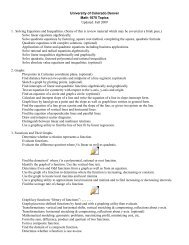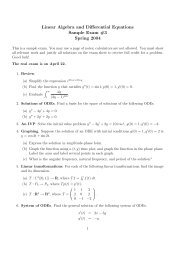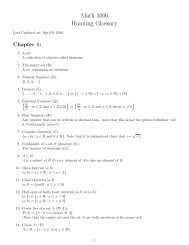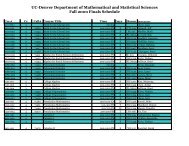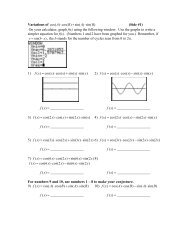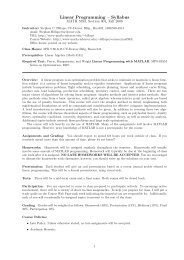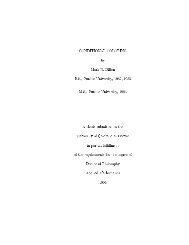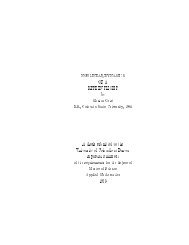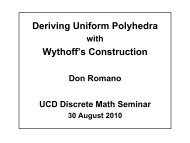A Game-Theoretic Approach to Personnel Decisions in American ...
A Game-Theoretic Approach to Personnel Decisions in American ...
A Game-Theoretic Approach to Personnel Decisions in American ...
You also want an ePaper? Increase the reach of your titles
YUMPU automatically turns print PDFs into web optimized ePapers that Google loves.
Chicago Bears this past season and some implications due <strong>to</strong> this comparison.<br />
2 Sett<strong>in</strong>g Up the <strong>Game</strong><br />
We consider two-by-two zero-sum games where the offense either runs or passes<br />
and the defense either defends aga<strong>in</strong>st the run or defends aga<strong>in</strong>st the pass.<br />
Each payoff represents an expected ga<strong>in</strong> for the offense under the given strategic<br />
situation. For any serious football team, it is reasonable <strong>to</strong> suggest that<br />
the payoffs can be found, s<strong>in</strong>ce every coach<strong>in</strong>g staff spends much of their time<br />
break<strong>in</strong>g down film.<br />
Table 1: Initial Payoffs<br />
Defense<br />
Defend Run Defend Pass<br />
Offense Run ar,r ar,p<br />
Pass ap,r ap,p<br />
Let the offensive and defensive strategy sets be {R,P } and {DR,DP },<br />
respectively. Furthermore, let ar,r denote the payoff for (R,DR), ar,p denote<br />
the payoff for (R,DP), and so on, as <strong>in</strong> Table 1. Throughout this paper, we<br />
make the reasonable assumptions that ar,r < ap,r and ar,p > ap,p.<br />
We calculate the expected ga<strong>in</strong> for the offensive team <strong>in</strong> a straightforward<br />
manner, save that we adopt a convention used by Alamar (2006) and<br />
Rockerbie (2008) and deduct 45 yards from a team’s <strong>to</strong>tal yardage for each<br />
fumble and <strong>in</strong>terception. For <strong>in</strong>stance, <strong>to</strong> determ<strong>in</strong>e ar,r, suppose that there<br />
were nr,r observed plays <strong>in</strong> which the offense elected <strong>to</strong> run and the defense<br />
elected <strong>to</strong> defend the run, amount<strong>in</strong>g <strong>in</strong> a <strong>to</strong>tal of yr,r yards and tr,r turnovers.<br />
Then<br />
ar,r = yr,r − 45tr,r<br />
.<br />
The rema<strong>in</strong><strong>in</strong>g payoffs <strong>in</strong> Table 1 are calculated <strong>in</strong> a similar manner.<br />
nr,r<br />
3 The Improvement <strong>in</strong> Pass<strong>in</strong>g Model<br />
Hav<strong>in</strong>g demonstrated how <strong>to</strong> calculate the payoffs for our team prior <strong>to</strong> the<br />
relevant personnel change, we now model the impact of this personnel change



